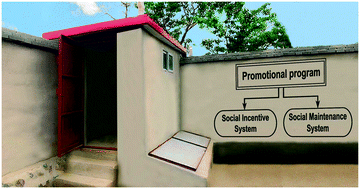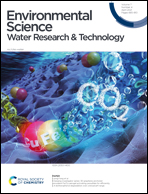Beyond technology: a program for promoting urine-diverting dry toilets in rural areas to support sustainability†
Abstract
Urine-diverting dry toilets (UDDTs) have been dubbed “sustainable toilets” due to their resource recycling, water efficiency, and micro-pollutant isolation capabilities. However, the number of UDDTs in use remains limited due to inherent disadvantages such as high demand for routine maintenance. In order to maximize UDDT application, we proposed a UDDT promotional program to promote UDDTs in rural areas. Supported by the local government, our UDDT promotional program was implemented in a village located in Northwest China, and the UDDT coverage rate in the village reached 95.7% after one year. However, the factors that were highly correlated with improved uptake and operation of UDDTs during implementation remain elusive. Univariate analysis and multivariate ordinal logistic regression were conducted on survey data collected from local villagers to test the association between the promotional program's 14 implementation factors and the effectiveness of prevalence. Based on the survey results (N = 538), six implementation factors, including trigger meetings, follow-up visits, commendation conferences, brand ambassadors, operation demonstration, and on-site training, were significantly and independently associated with the effectiveness of prevalence. These results can provide firm suggestions for improving the UDDT promotion process.



 Please wait while we load your content...
Please wait while we load your content...